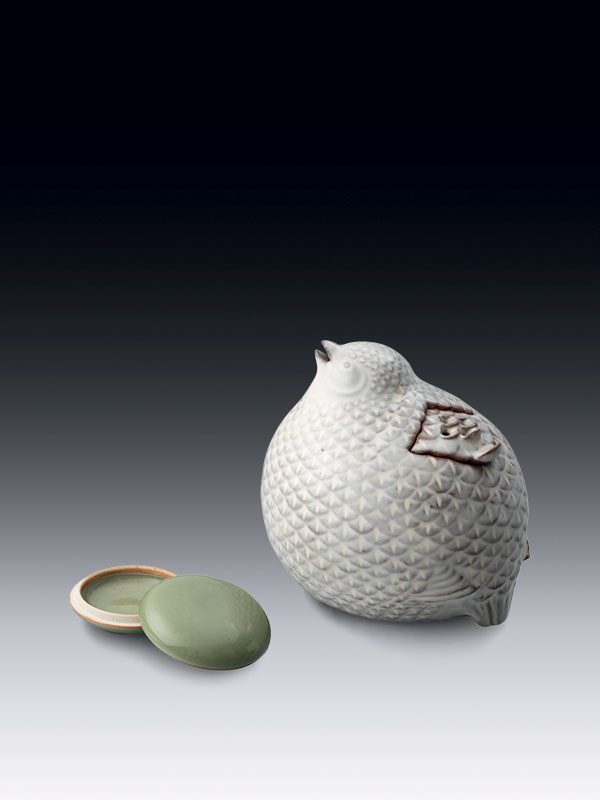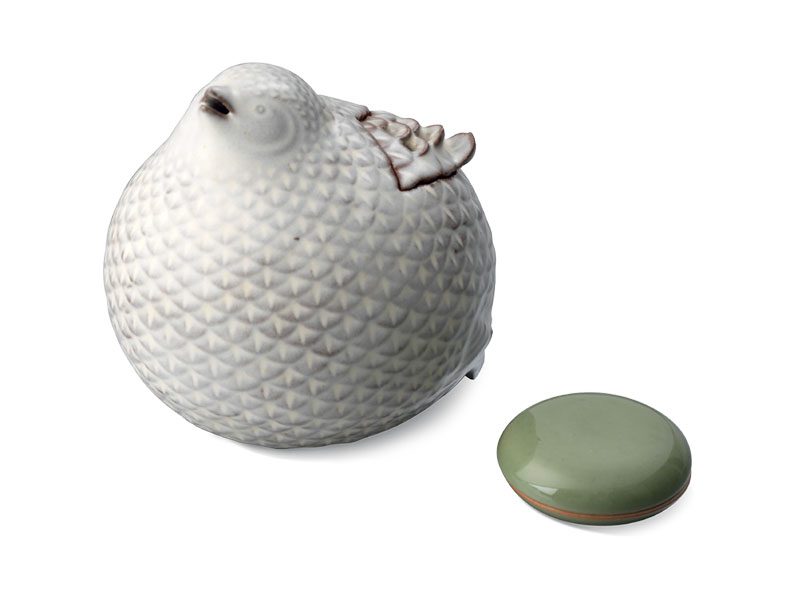Stoneware quail incense burner and celadon box by Yagi Isso
Japan, Taisho or Showa period, early 20th century
A stoneware incense burner in the form of a sitting quail, the lid formed as a triangular section of the back and removable. The bird has its beak open and the plumed skin is indicated by regularly applied incisions. The red-burnt stoneware is covered on the exterior with a white glaze. The incense burner comes with a small celadon kogo or incense box, left completely plain and covered in an even green glaze, leaving the rims and the base unglazed. Both incense burner and box are kept within the original wooden storage box, tomobako, which has an inscription on the outside reading Uzura, koro, seiji kogo soe (quail koro censer), with an accompanying celadon kogo (incense container)). Another inscription is on the inside, reading Isso saku, with seal Isso (made by Isso, with seal Isso). The cloth of both the box and the quail are stamped with the seal of Isso.
The artist of this charming quail incense burner and its accompanying celadon box is Yagi Isso, who lived from 1894 to 1973. His original name was Yagi Eiji. He and Kusube Yaichi (1897-1984) formed an influential pottery group named Akatsuchi-sha (“Red Clay”). Kiyomizu Rokubei IV (1901-1980) and Kawai Kanjro (1890-1966) had kilns next to Yagi Isso, in Gojo-zaka, Kyoto. Louise Cort records in her account of the Kyoto ceramic world, Isamu Noguchi and Modern Japanese Ceramics, that Yagi Isso moved from Osaka to Kyoto to study ceramics at the Ceramics Research Institute. The formation of Akatsuchi
was in defiant opposition to the refinement of the “white clay” ceramics displayed in government-sponsored exhibitions such as the Noten. During the Edo period, wealthy daimyo used to keep quails in their gardens for the beauty of their voice, which sounded like “Gokitcho”,meaning “signs of good omen”.
- Notes


